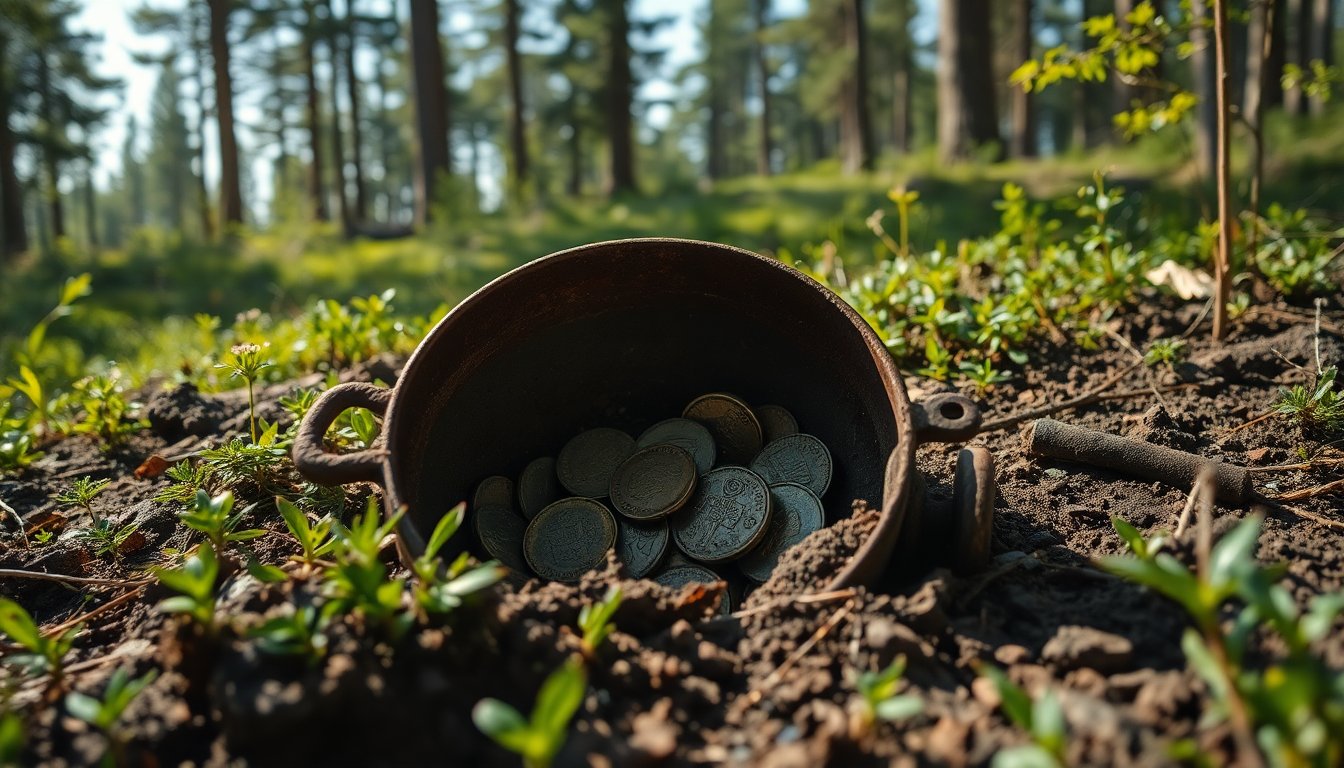Table of Contents
In a significant archaeological discovery, a Swedish fisherman unearthed a cauldron filled with ancient coins and jewelry while digging for worms near his summer residence. This find, reported by the County Administrative Board of Stockholm, dates back to the early Middle Ages and has generated excitement among archaeologists and history enthusiasts.
The discovery occurred in Stockholm County, an area known for its historical significance. The fisherman, who remains unnamed, made the discovery during a routine search for bait. Authorities have not disclosed the exact location of the find as investigations are ongoing.
The facts
Officials confirmed that the cauldron contains an unusually large and well-preserved silver hoard. Estimates suggest that the trove may include up to 20,000 coins, weighing approximately six kilograms. This discovery is considered one of the largest silver hoards from the early Middle Ages ever found in Sweden.
Insights from the discovery
Sofia Andersson, an antiquarian with the County Administrative Board of Stockholm, emphasized the importance of this find. She indicated that it could potentially be one of the most extensive silver hoards from that period unearthed in the country. While the exact count of coins is still being determined, Andersson suggested that the total might indeed approach 20,000.
Although the coins and jewelry are largely intact, the cauldron has experienced corrosion, affecting its condition. Among the notable treasures are rare coins, including a 12th-century coin featuring an inscription related to King Knut Eriksson, and another from Gotland depicting a church.
Historical context and significance
Noteworthy is a coin depicting a bishop, which provides insights into the monetary practices of that era. During the Middle Ages, specific coins known as bishop’s coins were minted across Europe, often commissioned by bishops. The hoard includes several such coins, featuring a bishop depicted with a crozier, symbolizing ecclesiastical authority.
Next steps for the treasure trove
The archaeological team is currently documenting and analyzing this remarkable collection. The County Administrative Board will notify the Swedish National Heritage Board regarding the find, which will determine if the state will redeem the treasure. Under Swedish law, individuals who discover ancient artifacts are required to report their finds to the authorities, who may offer compensation.
Andersson commended the individual for responsibly reporting the discovery, stating that he adhered to the regulations set forth in the Cultural Environment Act. This law is crucial for preserving and studying treasures of historical importance.
This discovery in Sweden is part of a growing trend of significant archaeological finds in Northern Europe. In the past year, a plumber in the United Kingdom found a cache of ancient coins, and a British family uncovered Tudor-era coins in their backyard, set to be auctioned in Switzerland.
As historians and archaeologists continue to study this treasure trove, the potential insights into medieval life, commerce, and culture remain a promising area of exploration.


